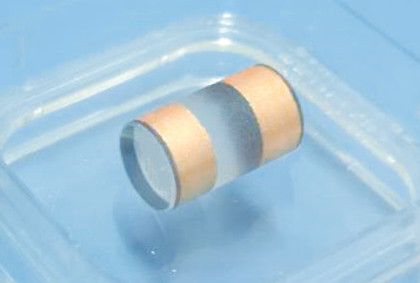The variation of refractive indices with temperature is an important crystal parameter in nonlinear optics. It is well known that the wavelength at which 90° phase-matched second-harmonic generation occurs depends on temperature. The variation of this wavelength with temperature can be predicted with a knowledge of the variation of the refractive indices with temperature and is referred to in this paper as the tuning rate. Since 90° phase-matched second-harmonic generation is usually more efficient than angle-matched second-harmonic generation, the tuning rate is a useful parameter to predict which wavelengths can be 90° phase matched over practical temperature ranges. It is also well known that the average power limit of a nonlinear interaction is dependent on the variation of the refractive indices with temperature. A knowledge of the variation of the refractive indices with temperature, as well as a knowledge of the absorption coefficients and the thermal conductivity, permits the prediction of the average power limit. The measurement of this parameter has been performed for a few crystals, such as ADP, KDP, KD*P (www.wisoptic.com) and CD*A. This paper repeats these measurements and extends the measurements to RDP, CDA, RDA, KDA, and ADA. In addition, the data are used to calculate the tuning rate for all these crystals. The calculated tuning rate can be compared with the measured tuning rate.
The measurement technique used with these crystals is a measurement of the variation of the angle of minimum deviation. The technique is described in more detail in Section 2. The relationship between the variation of the angle of minimum deviation and the variation of the refractive indices with temperature depends on the orientation of the crystal prism with respect to the optic axis. This is explained in more detail in Section 3. The measured variation of the refractive indices with temperature for both the arsenates and the phosphates is also given in this section. The refractive-index data for these crystals are fitted to a one-pole Sellmeier equation in Section 4. The one-pole Sellmeier coefficients are then used to predict the fundamental wavelength at which 90° phase-matched second-harmonic generation occurs. In conjunction with the measured values of the variation of the refractive indices with temperature, the tuning rate is also predicted with the one-pole Sellmeier coefficients. Both these quantities are then compared with measured quantities, and reasonable agreement is found except for those cases in which a significant extrapolation beyond measured values was necessary. Finally, the results are summarized in Section 5.
Post time: Jul-12-2022

